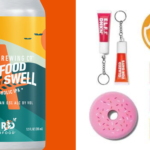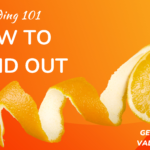Branding is important. Whether you’re a business owner, entrepreneur, or marketing manager, having an effective brand will help you stand out from your competitors and allow consumers to connect with your company or product. Let’s talk about what branding really means and how to create one that works for you!
Branding is what makes you unique
Branding is how you connect with your customer. It’s the reason people buy your product, and it’s what makes your company stand out from the competition. Branding is not just about visuals. Branding is about creating an emotional connection with the consumer, building a relationship that they will remember and value. Successful brands are ones that create a unique value proposition that resonates with people in some way, whether it’s through the product or service itself or how it’s presented.
Brand strategy is important because it’s the way that you communicate who you are as a person or business to the public. A brand strategy should be based on specific goals and an understanding of who your target audience is—not just “everyone” or “anyone who needs my services.” Once you know who those people are, then it’s time to decide how best to reach them through branding tactics such as advertising (traditional media), social media marketing (online media), PR (public relations), digital/web design, etc.
Brand = Value
Your brand is not just the logo. It’s everything associated with your company or product—from the tone of voice used in copy, to packaging, to the website design, to how you answer the phone. Your brand is what people think about when they think of you.
Brand = Value. Branding is a promise to your customer that you deliver on that promise consistently across all channels. When your audience can connect with your brand and trust it you are creating a valuable relationship that can be strengthened over time – this is also known as brand equity.
To build this connection and make sure your brand is memorable, you need to think about everything from colors and fonts to messaging and tone of voice (more on these later). It may seem like there are hundreds of things to consider when designing your brand identity, but you can boil down every decision into one question: “What does my customer want?”
Branding starts with a clear vision and mission
Crafting your brand starts with a clear vision and mission. Vision and mission are the foundation of your brand so your vision and mission statements should be clear, specific, and based on your values. In order to create a clear vision and mission statement, you should make sure that you have defined your values clearly.
Your values will help guide you in making decisions about how to run your business or organization. Your vision statement should describe where the company is going and what it will look like when it gets there. What does your brand aspire to change, achieve and/or become?
For example: “To fill the gap created by modern food production.”
Your mission statement should explain what this means in terms of actionable steps for employees or volunteers who work at your organization or business. For example: “To empower everyone to lead a full and healthy life. ” What is the brand’s reason for existing, its purpose, and overall intention?
Mission Statement + Vision = Purpose
A brand’s mission is the why and vision is the what, but the purpose is the how. The three must be aligned to define your brand’s unique identity. A good mission statement should be clearly defined with a positive attitude, while a strong vision will inspire others to follow it.
What’s your purpose?
Create a unique value proposition that is relevant to your consumer
If you’re creating a new brand, it’s important to create a unique value proposition (UVP) that is relevant to your target audience. A UVP is the reason why one product or service stands apart from others in its category. It’s important to understand how your product or service is different from others in its category, and what makes it stand out from the crowd.
Your UVP should be easy to understand, easy to communicate, and have a broad appeal for potential customers.
Remember to look at the externally environment and your internally capabilities.
I know this may sound obvious, but it’s important to look externally at your competitors and the market in general. This will help you understand what your consumer wants and how you are different from the competition. You can also use external sources to learn about new trends and technologies that can improve your brand positioning.
At the same time look internally in terms of your capabilities and what makes you unique. Know your strengths and weaknesses, what you are good at and what you are not good at, what makes you unique, and what you can do better than others, such as bringing expertise, saving time, better quality etc. I like to use the B2C Value Pyramid by Bain.
Encapsulate your brand in a brand essence
Your brand essence is the one-word description of your brand. It’s the core message that you want to communicate to your audience. Here are some examples of brands and their essences:
Coke = Happiness
Walt Disney = Magical
Trade Joe’s = Outstanding Value
Conclusion
In order to build a strong brand, you need to know your brand, mission and vision. Your brand is the promise you make to your customers. It’s what they can expect from your business and how they identify with it. Your mission is the reason you exist—it’s what keeps you going when times get tough or when other people doubt what you’re doing. A great example of this is Warby Parker’s vision and mission statement
Vision: “we believe that buying glasses should be easy and fun”. It should leave you happy and good-looking, with money in your pocket. We also believe that everyone has the right to see.
Mission: “to inspire and impact the world with vision, purpose, and style”
Values: “green is good, respect for all, customer-first”
They have built their company around their mission statement in every way possible because it drives everything they do each day.
The most important thing to remember about branding is that it’s not just a logo or slogan. It’s the whole package that makes you memorable and different from your competitors—and the more you can think through every aspect of how your brand will come across in every interaction, the better off you’ll be when it comes time to actually create your brand or enhancing what you already have!


